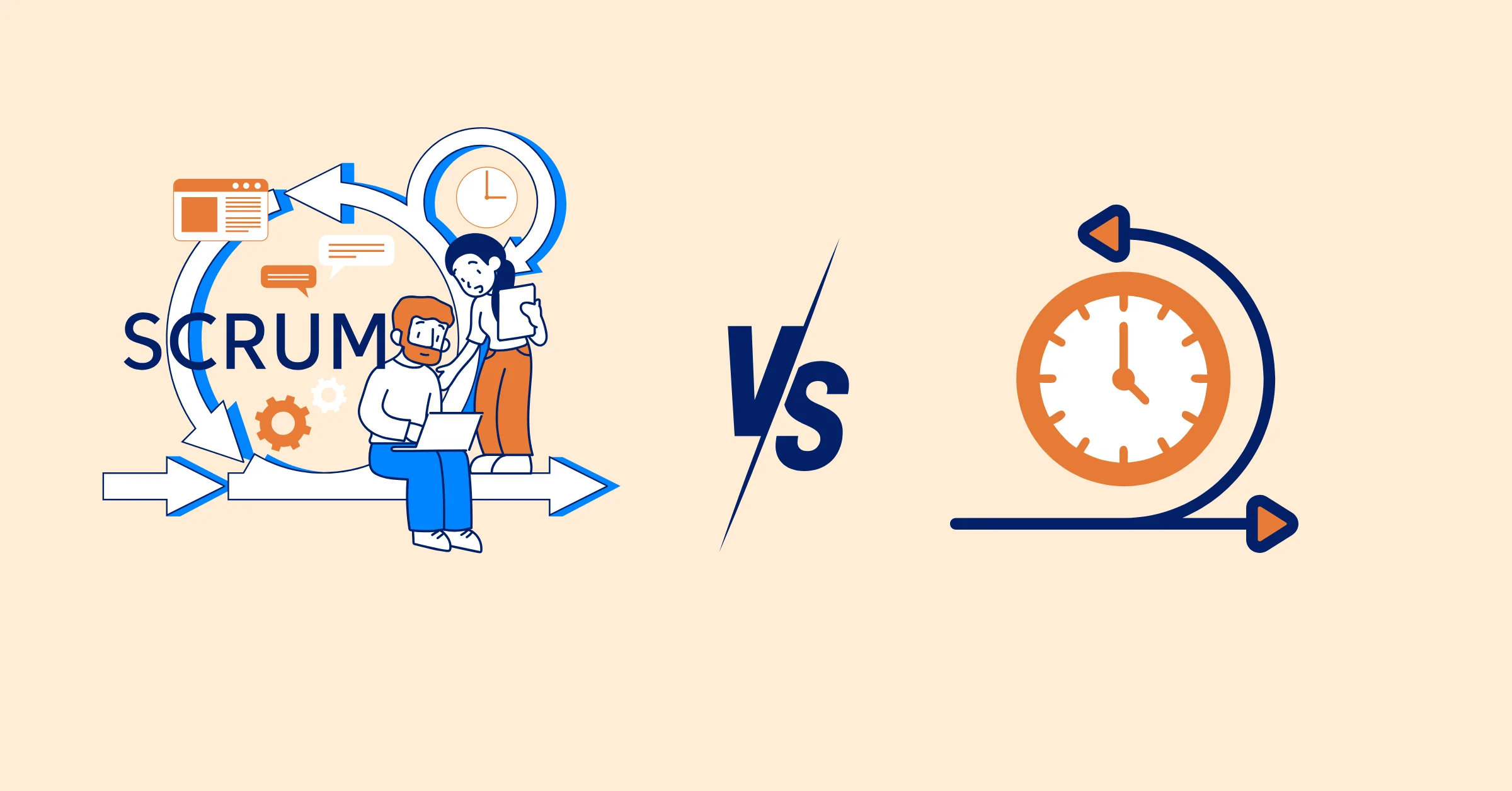Agile Terminology in 2025 and 2026: New Words Teams Are Using
Explore how Agile terminology is evolving in 2025 and 2026, with new terms focusing on AI, value-driven work, and flexible team structures.
Agile terminology is something almost every team member comes across—whether in daily stand-ups, planning sessions, or project updates. Words like sprint, backlog, and retrospective have become part of everyday conversations. But here’s the thing: Agile terminology doesn’t stay the same. Just like the way teams work changes, so does the language they use.
In 2025 and heading into 2026, we’re starting to see new terms appear in Agile conversations. Some of them stem from the rise of AI in Project Management, while others result from the shift toward focusing on outcomes rather than just outputs. Agile is also spreading far beyond software, which means the way people talk about it in marketing, HR, and operations is shaping new expressions.
This blog takes a closer look at which Agile terminology is still relevant, what new terms teams are using in 2025, and what might become common in 2026 and beyond.
The Foundation: Core Terms Still in Play
Even as new phrases come and go, some Agile terminology has stood the test of time. These are the words you’ll hear in almost every Agile team, no matter the industry or size of the project. They form the foundation of how Agile work gets done.
-
Sprint: A short, time-boxed period (usually 1–4 weeks) where the team focuses on delivering a set of work. The idea is to move fast, get feedback, and adjust.
-
Backlog: The to-do list of work. It can be a product backlog (all the features and ideas for the product) or a sprint backlog (the specific tasks chosen for the current sprint).
-
User Story: A simple way of describing work from the perspective of the end user. For example: “As a customer, I want to reset my password so I can access my account.”
-
Daily Stand-up: A short daily meeting where team members quickly share what they did yesterday, what they’re doing today, and any blockers they’re facing.
-
Velocity: A measure of how much work a team can complete in a sprint, usually tracked by story points. It helps with forecasting—but as we’ll see, many teams are starting to shift toward other ways of measuring progress.
-
Retrospective: A regular meeting where the team reflects on the past sprint/iteration to identify what went well, what could be improved, and how to implement those improvements.
-
Scrum Master: The team role responsible for ensuring the team adheres to agile values and principles, and facilitates the agile process.
-
Product Owner: The team role responsible for maximizing the value of the product resulting from the work of the Development Team.
-
Kanban: A method for managing and improving work, emphasizing visualization of workflow, limiting work in progress, and continuous flow.
These core Agile terms haven’t disappeared, and they’re not likely to anytime soon. But the way teams use and interpret them is starting to change. For example, velocity was once the go-to measure of team performance, but now many teams prefer to look at flow metrics like cycle time or throughput.
If you’d like a broader overview of project management language, check out our Project Management Terms A–Z guide. But here, we’ll focus on how Agile terminology is changing right now and why it matters for the way your team communicates and delivers work.
New Agile Terms in 2025
Agile terminology in 2025 shows how teams are shifting their focus—less on just “getting work done” and more on discovering the right work, delivering value, and using smarter tools. Here are some of the new terms that have become part of everyday conversations:
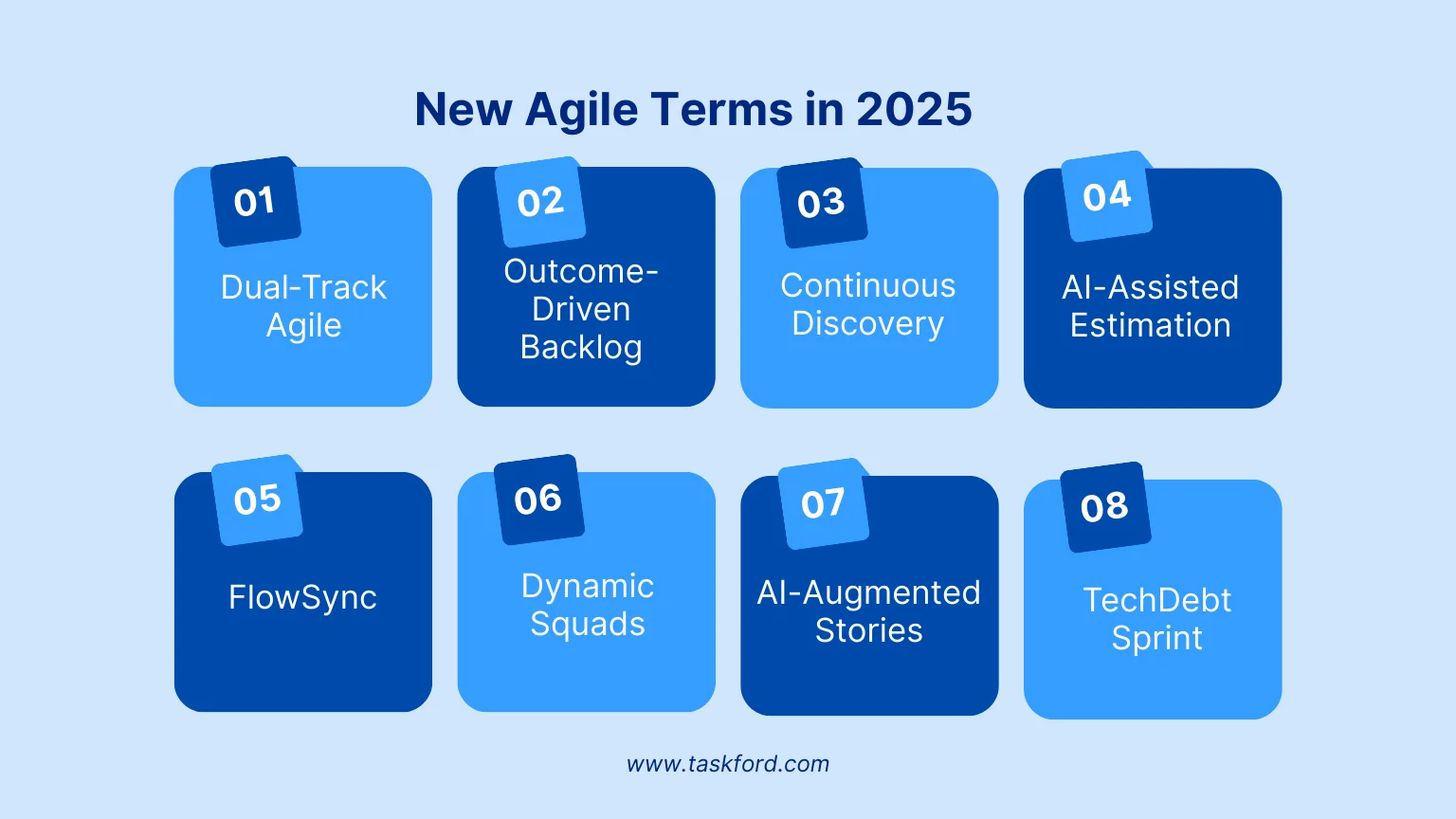
1. Dual‑Track Agile
Agile teams are moving beyond mere delivery. With Dual‑Track Agile, delivery runs alongside discovery, a parallel stream where teams explore, test, and validate ideas before building. It helps ensure that the backlog holds only well-validated, user-backed concepts.
(Learn more about the Dual-Track Agile framework here.)
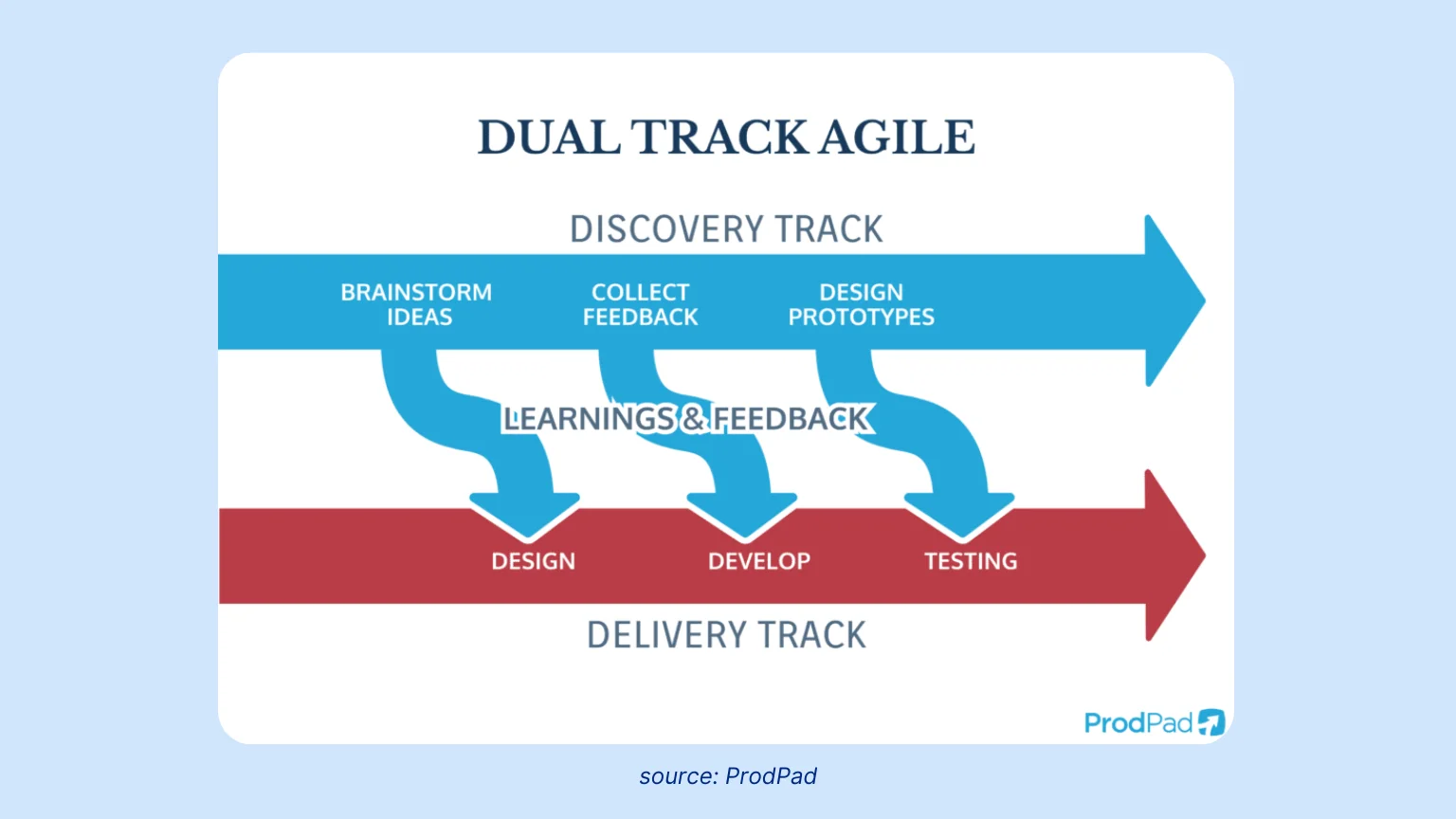
2. Outcome-Driven Backlog
Backlogs are shifting from lists of tasks to lists of goals and impacts. For example, instead of “add a search filter,” a backlog item might say “increase search success rate by 10%.” The aim is to connect work directly to measurable value. (Source: Atlassian’s Agile metrics guide)
3. Continuous Discovery
Research and customer learning are no longer separate phases. With continuous discovery, teams run interviews, usability tests, and experiments in parallel with development so that every sprint is both about building and learning. (Source: Teresa Torres - Continuous Discover Habits)
4. AI-Assisted Estimation
Estimating work has always been tricky. Now, AI tools are stepping in to analyze past sprints, team capacity, and complexity to suggest story point estimates. Teams still decide, but AI reduces guesswork and speeds up planning.
(Learn more: AI-assisted sprint planning tools - Zenhub)
5. FlowSync
As organizations scale, keeping multiple teams aligned is harder. FlowSync is about synchronizing work across teams or squads to reduce bottlenecks and keep delivery flowing smoothly. Think of it as a step beyond tracking flow metrics—it’s about coordinating them.
6. Dynamic Squads
Dynamic Squads are temporary, cross-functional Agile teams assembled for specific initiatives or problems, disbanding once objectives are met. Unlike fixed Scrum teams, Dynamic Squads prioritize flexibility, allowing organizations to reallocate skills rapidly based on priorities. (Atlassian - Agile Workflows)
7. AI-Augmented Stories
Employs AI to draft or refine user stories using customer feedback and data analytics, with teams validating the output for better prioritization.
8. TechDebt Sprint
Instead of squeezing technical debt work into regular sprints, more teams are dedicating an entire sprint (or a clear portion of it) to cleaning up code, refactoring, and upgrading dependencies. This shift shows a cultural change: treating tech debt as real work, not an afterthought. (Source: Atlassian - Managing Techbical Debt)
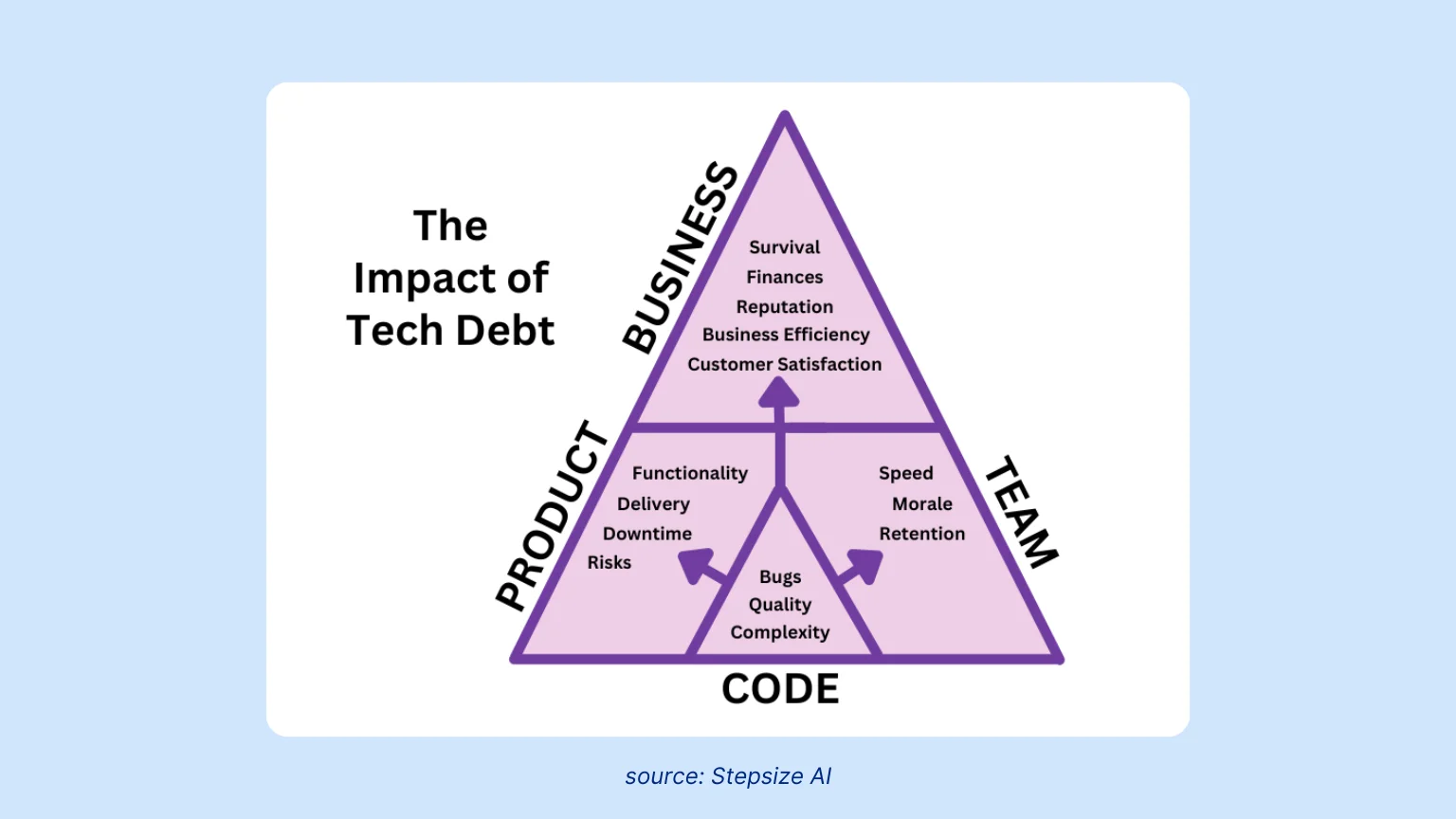
Emerging Agile Terminologies in 2026
As Agile continues to evolve, new terminologies are emerging that reflect innovations in technology, team dynamics, and the increasing demand for value-driven work. Here are some of the exciting terms we expect to see gaining traction in 2026:
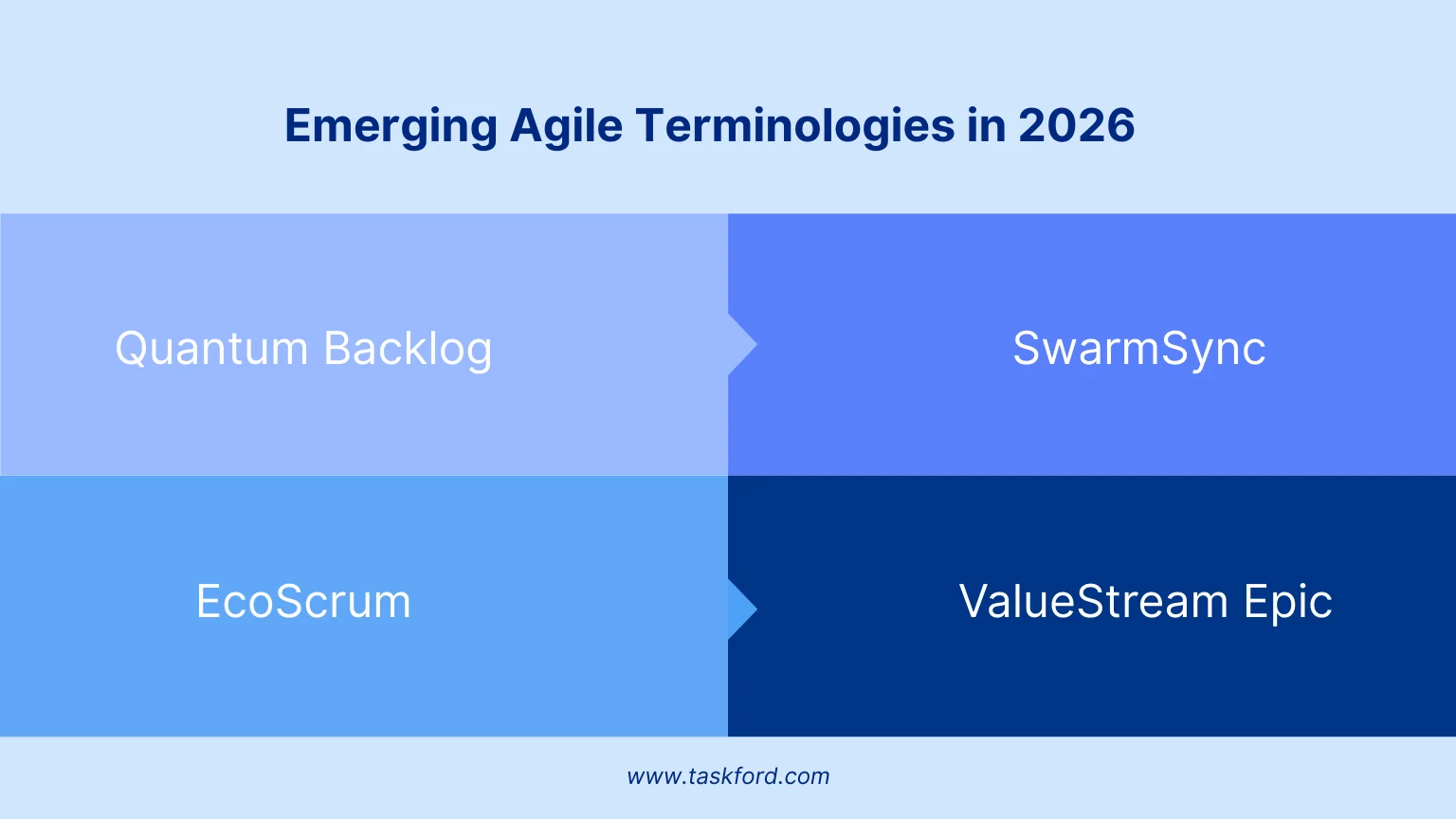
1. Quantum Backlog
A dynamic, AI-driven backlog that uses predictive algorithms to prioritize tasks based on real-time market trends, customer behavior, and team capacity. It adjusts priorities automatically, reducing manual refinement.
2. SwarmSync
As teams become more distributed, SwarmSync refers to the practice of synchronizing multiple teams working on related tasks. It aims to eliminate duplicated efforts, enhance communication, and ensure that all teams work in unison towards a single goal. The term draws inspiration from swarm intelligence, which is used to describe the collective behavior of decentralized systems, ensuring seamless coordination across large-scale, cross-functional projects.
3. EcoScrum
EcoScrum is the practice of integrating sustainability into Agile processes. It encourages teams to focus on eco-friendly practices throughout the Agile lifecycle—such as reducing energy consumption, selecting sustainable tools, and ensuring that the products developed have a positive environmental impact. As sustainability becomes a priority for businesses, EcoScrum helps teams reduce their ecological footprint while delivering value.
4. ValueStream Epic
In SAFe (Scaled Agile Framework), a Value Stream Epic represents a large, cross-functional initiative designed to achieve a strategic business objective or improve a business value stream. It requires coordinated work across multiple development value streams and is a significant undertaking that directly contributes to overall business outcomes. The epic is broken down into features and user stories, making it manageable and actionable, while ensuring alignment with broader organizational goals.
Why Agile Terminology is Changing
Agile terminology is changing because the way teams work is evolving. The rise of AI, the shift toward outcome-driven backlogs, and the expansion of Agile practices beyond software development are driving this transformation.
The goal is not just to move faster, but to deliver value, align teams, and create more sustainable and meaningful outcomes. As Agile continues to mature, so will its language, reflecting both the tools and practices that are shaping the future of work.
Conclusion
Agile terminology is constantly evolving to keep up with the changing demands of teams and businesses. From the rise of AI-powered tools to the shift towards outcome-driven work, Agile is becoming more adaptable, value-focused, and inclusive. As we move into 2026 and beyond, these new terms will help teams work smarter, collaborate more effectively, and deliver meaningful results faster. Staying updated on these changes will not only improve how your team communicates but also ensure that you remain competitive in an increasingly agile world.
Continue Reading
- Agile Project Management: The Basic for Beginners
- Are Cost Baselines Made for Agile Projects
- Agile Project Management Software
- How Agile Project Management Software Helps Track Developer Performance: 5 Tools to Know
Making work simpler,
smarter, and more connected
Join our waitlist and be notified first.

Related Blog
Subscribe for Expert Tips
Unlock expert insights and stay ahead with TaskFord. Sign up now to receive valuable tips, strategies, and updates directly in your inbox.




